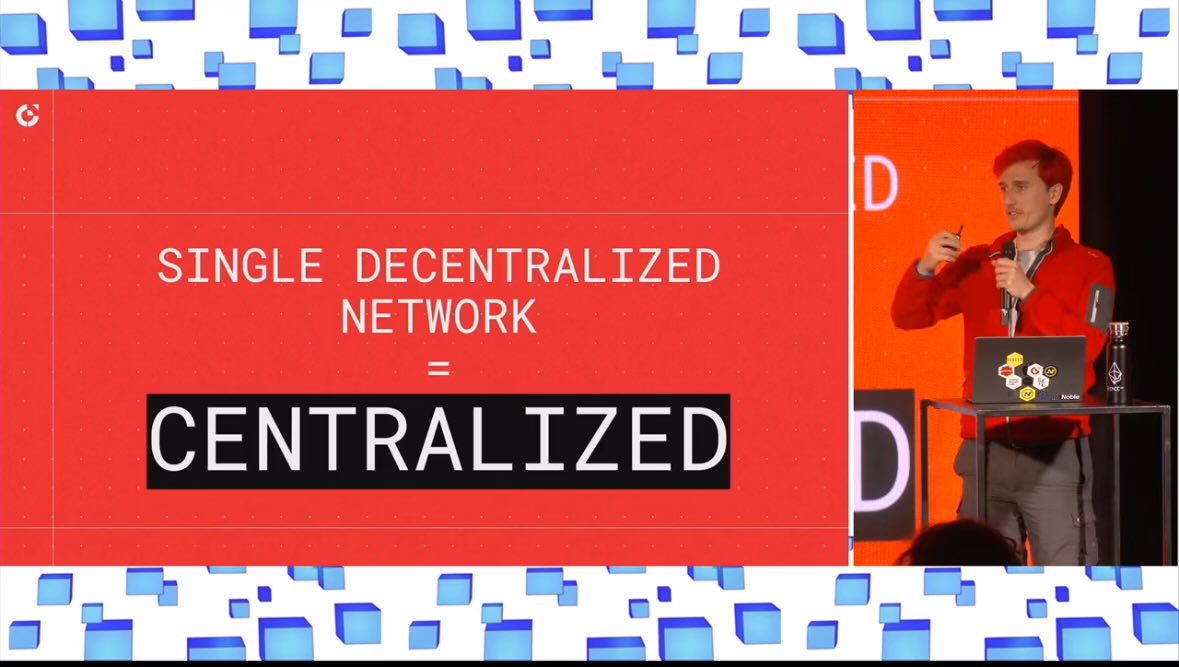Wisper is a p2p chatting application that enables creating chat rooms without needing a trusted chat application by creating a private local blockchain among users. Communication protocol can be Wi-Fi (even though there is no internet connection on the network and trusting your ISP), Bluetooth or any other method. Every time a user joins a chat, they establish a p2p connection by connecting every node on the chain and introducing themselves to them and start communicating. Wisper doesn't store any data. It's all client side.
Blockchains are only working with a proper internet connection, private blockchains are on the agenda, Adrian Brink, Cofounder of Anoma and Namada just made a speech about public networks are not that relieble when there is ongoing crisis such as war, disaster etc. There are lots of use cases for private local blockchains, and it they can solve so many problems if implemented.
Another aspect: In daily basis, centralized chatting applications such as whatsapp, telegram etc. are the most used applications. When it comes to chatting, we sometimes need privacy while exchanging private information. Whatsapp claims to do end to end encryption but there are no proofs because they are not open source. Even that is open-source, they have backend. Be honest, we all know "Meta" :)
We enhance Ethereum's infra liveness by creating own little private chains by doing everything in the local chains and settlement to Ethereum at the end of the room.
Wisper is fully client side, so there are no middlemans that can access to messages, store them, sell them to companies. There are no requirement for "internet" connection.
For example, one of the use cases is in a company, board members can create a room and share it with the others. When it is created, a local, private, p2p chatroom is created. They can chat securely knowing there are nobody outside of the board has access to messages.
For the implementation we built at the hackathon, users downloads desktop application which is basically contains a node.js light-node implementation and React front-end. Wisper is fully open source and client-side. Since it is developed in a very clean way, anybody with a little coding or running node experience can verify this.
This is the general architecture. Before breaking down the architecture, there is one big technology we use: Desktop app that works on browser . We developed our idea partially for the mobile app. Fully working demo is an desktop app built with electron, but client side parts working on browser with react app underneath. This enables to read all the code, and features that requires using extensions such as TLSNotary or Metamask.


In this chapter, we will break down and demonstrate our project repo
ui In that folder, we developed the client side with React. It communicates with the remaining network via its own localhost deployed by the electron app.
controller Our main actions are in that folder, so it is enough to demonstrate it.
Gossip
gossip folder contains the protocol needed for communication between nodes.Receive controller handles the logic of verify the data and signature and pass it to UI. Send controller handles the logic of creating,signing and sending a conversation
peer
peer folder contains the protocol needed for introducing and recognizing process between nodes. New user call introduce endpoint and it calls other node's recognize endpoint
room
room folder contains the logic of creating a new room and joining an existing node.
- Platform Agnostic For now, we have build the desktop app fully functional, and it can be implemented to any device. We made a demonstration app for mobile, but it is partially completed. Completing the mobile app is in our future plans.
- Communication Protocol Agnostic For now, we have implemented peer-to-peer connection via WiFi, but our architecture supports any platform or communication protocol. Bluetooth functionality can be added.
- UX By developing mobile app, users can share room info via qr, and even better, we can add NFC support, like in the ETHBrussels wristbands.
- File sharing We can use on-chain data storage solutions to upload picture,voice record, and even voice calls.
- Network constraints By developing the Gossip protocol, we can enhance the capacity of rooms.
In conclusion, Wisper represents a significant advancement in secure, decentralized peer-to-peer communication. By leveraging local blockchains and a client-side approach, it addresses critical issues present in centralized chat applications. Here are the key takeaways:
-
Privacy and Security: Wisper ensures end-to-end encryption and eliminates the need for trust in centralized servers. Messages are stored locally and transmitted peer-to-peer, ensuring that only intended recipients can access them.
-
Decentralization: Through the use of local blockchains, Wisper decentralizes communication networks. This architecture not only enhances reliability during crises but also empowers users with control over their data.
-
Accessibility and Transparency: Being open-source and developed with user verification in mind, Wisper promotes transparency. Users can review the code and understand how their data is handled, fostering trust in the platform.
-
Implementation and Future Scope: Initially developed as a desktop application with plans for mobile integration, Wisper demonstrates practicality and scalability. Future iterations could explore additional features and optimizations based on community feedback.
In essence, Wisper is more than just a chat application; it is a testament to the potential of decentralized technologies to reshape how we communicate securely and privately in an increasingly connected world.

